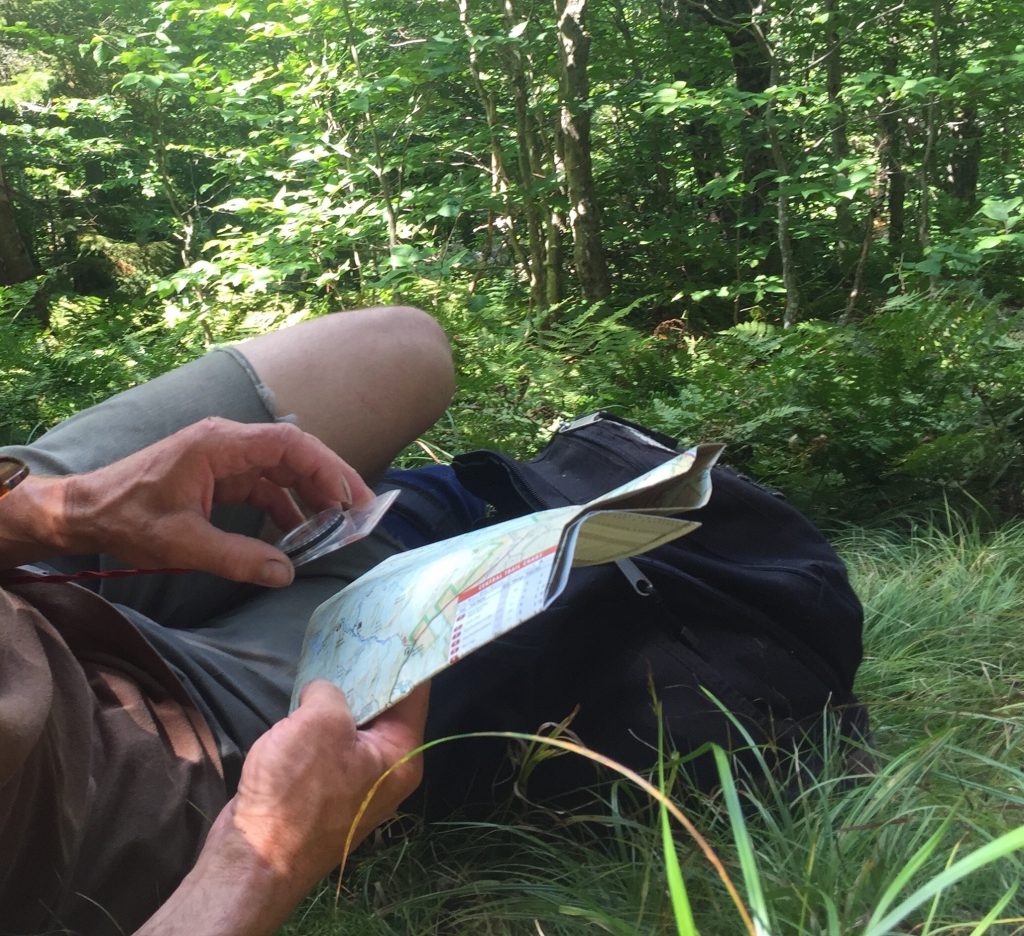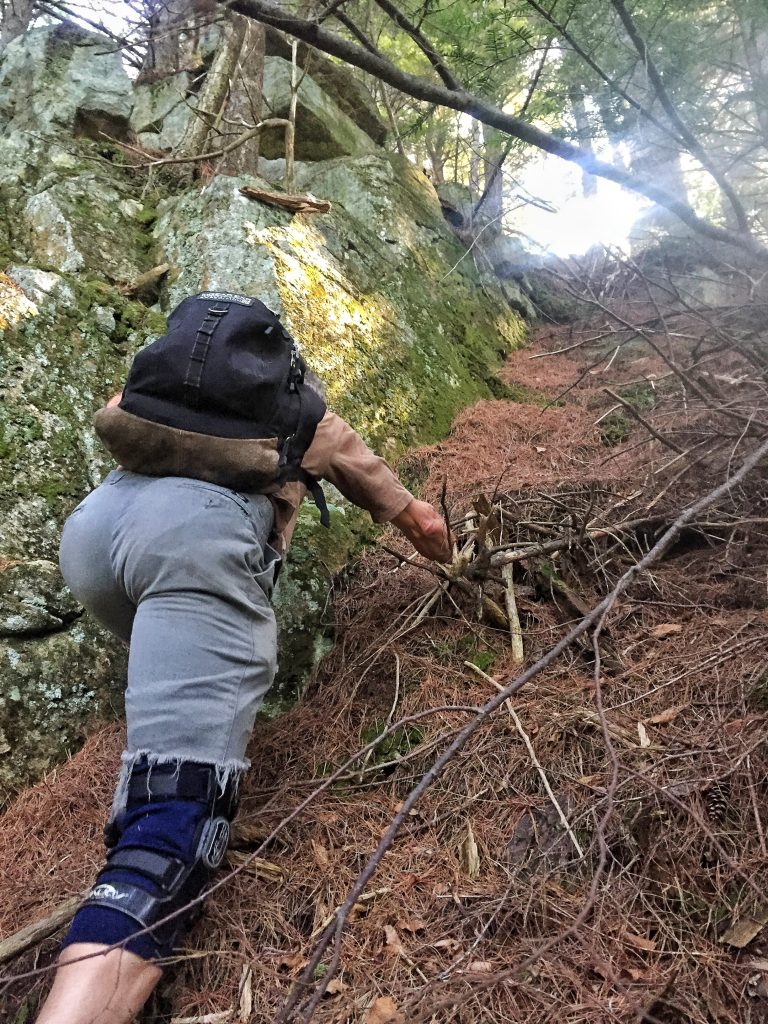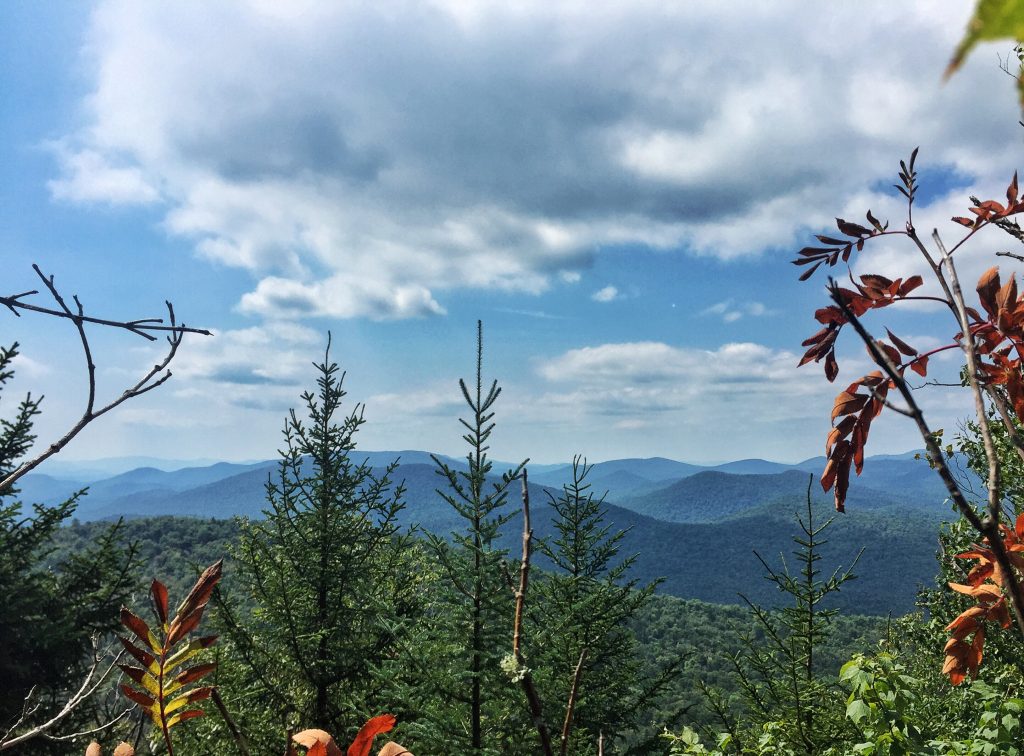We dug in with our hands, kicked in with our feet, and essentially crawled our way up a ridiculously steep pitch. It wasn’t pretty, but we made it to the top and to level ground. To give my arms and legs a break, I lay down on my back, breathing heavily, and asked, “Is this it? Are we close to the summit?”
Dan, hiking buddy extraordinaire, pulled out his map and compass. “The enemy is here,” he said, pointing to a spot on the map. “And, we are here,” he continued. “We shall circle around and surprise them.”
“Shut it,” I said. “Seriously, are we close to the summit?”
Dan and I were in the midst of a bushwhack up Eleventh Mountain in the Adirondack Park. The day was heavy with humidity, the temperature was as equally unattractive, and I have a tendency to sweat—copiously. I was drenched. And, although turnaround times are common, mine was for a reason most hikers probably don’t need to address. I was meeting my ex, three hours away, to pick up my boys after they had spent the weekend with him.
We didn’t have much time left, and I was antsy to bag this summit. Plus, word on the street was that there were some pretty great views to be had from the ledges nearby.
“No,” Dan said. “We still have another mile to go. If we go for it, we won’t make your turnaround time.”
I groaned, rolled over, and hid my face in the pine duff. “Damn,” I thought. “Second summit in a row I’m going to miss.

Two in a Row
Failing to summit one mountain—well, that can happen. Failing to summit two in a row makes you start to wonder what you’re doing, and why it matters so much.
A couple weeks earlier, I had been in Wyoming. My childhood friend, Betty, and I meet up once a year to backpack. She’s on the West Coast, and I’m on the East Coast, so we meet somewhere close to the middle. This year, we chose to hike all around the Medicine Bow National Forest, with the coup de grâce of summiting Medicine Bow Peak. Snowy summits in August? You had me at snow.
Bad weather plagued most of our trip. Drenching rain chased us into our tents at 3 p.m. one afternoon and didn’t clear until 6 a.m. the following morning, which also happened to be our summit day.
Clouds were pushing up and over the peak early, but we both agreed to climb to the saddle and reassess the weather at that time. Up we climbed, through boulder fields and past picas who chirped threats at us for daring to walk near their homes, until we made it to the saddle at 11,000 feet.
What had started out as a near-perfect hiking morning was now dissolving into dark clouds that streamed over the summit. The darkening skies tinted our hearts, as well. Another mile of hiking up 1,000 feet would put us on the summit—but at what cost? So, we made the decision to turn back. Heading down, I kept casting glances back. Was it still cloudy? What if we hunkered in our tents for a couple of hours? Would a window open up later today? No matter how much sense the decision made, it hurt to turn around and leave unfinished business behind me.
Everyone who has climbed a mountain knows summit fever—the compulsion to reach the top at all costs.
So, what is it about failed summit attempts that eats at us? Is it merely a feeling of failure? Or, perhaps, a sense that we have lost control? Is it actually a refusal, on the part of those of us who like to challenge ourselves, to admit that something is actually too difficult for us?

Sometimes, the Only Way to Win is to Admit Defeat
“This hike will not be in my top 10 hikes,” I announced to Dan as we went back to the car. I was feeling off. Moody. Not only was our attempt unsuccessful, but the whack back off the mountain was longer than either one of us anticipated. I was scraped and scratched from my thighs to the top of my knee socks. Dried blood covered each knee from hitting branches sticking up from dead and downed trees that hid sneakily beneath the ground cover. Typically, these things don’t even register on my radar, but today, man—a second missed summit.
“So, I’m thinking this will be a nice hike in cooler weather,” Dan said as we neared the car. “Plus, the leaves will be down.”
This was Dan’s second attempt on Eleventh Mountain. Getting to a summit is partly why he hikes, too—partly. I asked him why he had wanted to try this peak again. He replied, “Wanting to do Eleventh Mountain is not because it’s a mountain summit, but because I wasn’t successful at doing something I can do and tried to do.” Dan went on to say, “Not completing something is unfinished business. It requires closure.”
Unfinished business. That phrase rang true enough, like the nagging self-doubt that whispers in your ear when you aren’t successful at your first attempt: “If you only had started earlier in the day, if you had hiked faster, if you didn’t take that long break…” Improve on any of these, and for this hike, there wouldn’t be any unfinished business—all the more reason to get back out and try again.
“Yeah. That’s true. With no leaves in the way, the views will be even better,” I answered. Already, the frustration and pain were ebbing and being replaced by the all-to-familiar rising feelings of excitement over another challenge, the next adventure, the hopeful sense of accomplishment, and earning that end-of-the-hike grin.

Kristi Brennan
Kristi is a grateful mama to two boys, two cats, one dog and one rescue tarantula. Living less than 10 miles from the Adirondacks enables her to dip her toes into the park on a nearly weekly basis. A lover of the outdoors in any season, Kristi enjoys hiking, mountain biking, camping, snowshoeing and x-country skiing. Along with her 9 to 5 job of helping others to achieve their philanthropic goals, she also volunteers with a group called Lean2Rescue where she discovered that with the right group of people, the impossible can be done. You can follow her on Instagram @kelhiker.
Related Posts
April 24, 2024
What to Bring When Road Tripping with Your Dog
Prepare for the ultimate road trip with…




